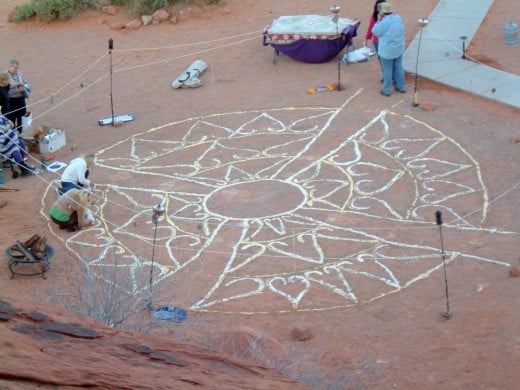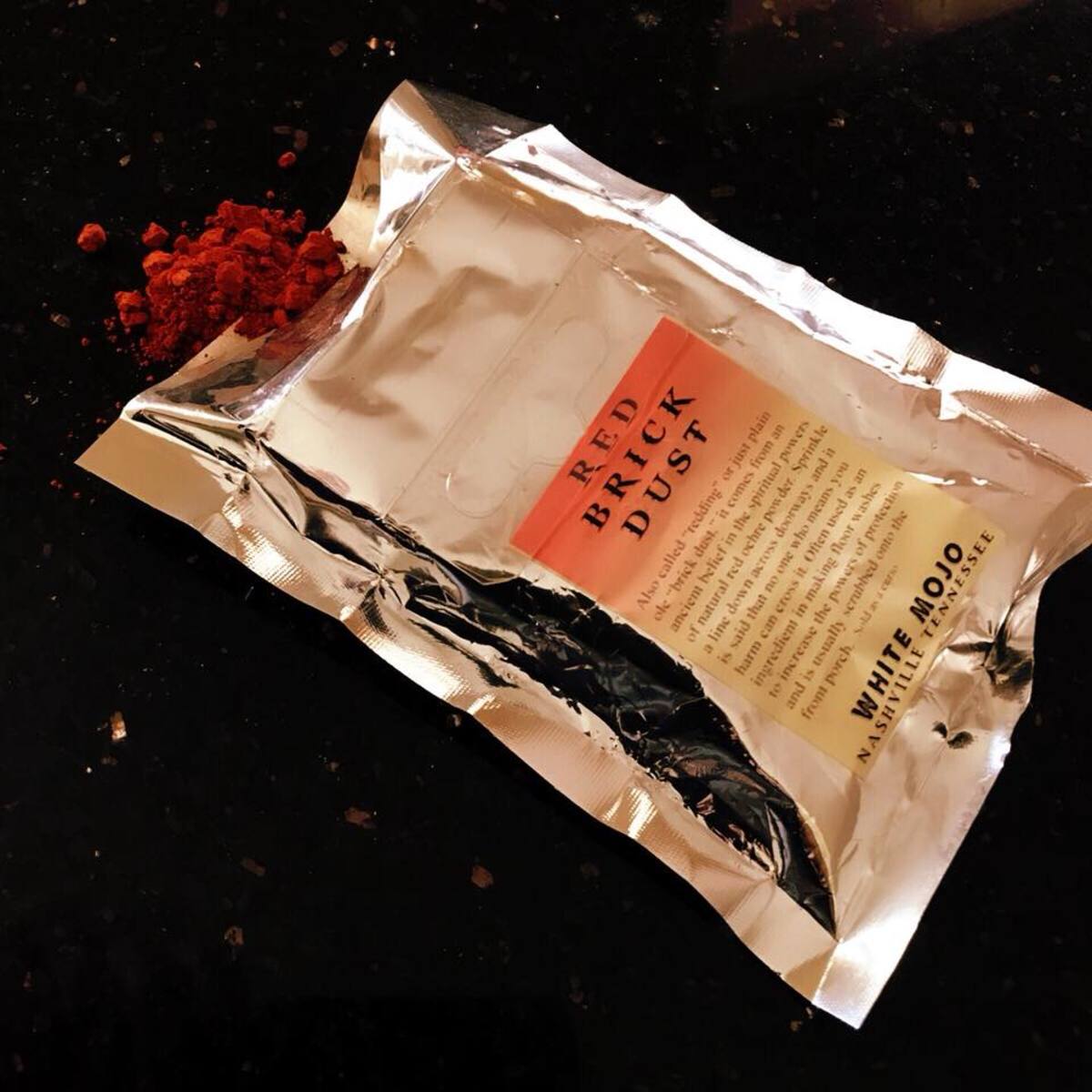Casting A Magickal Circle
Designating Space
One of the most common actions taken as part of magickal workings is to cast a circle. This designation of a special place or space that is outside the realm of the usual can have many purposes and functions. The ritual can be done with a group, or by solitary practitioners. It can be permanent fixture or temporary working depending on the purpose of the circle.
Depending on the tradition you practice, the casting of a magickal circle can be a large elaborate group ritual, or just a simple gesture done by a solitary practitioner. In nearly every case the intuition behind casting a circle is to create a space that is intentional, which can be physically and energetically cleansed and in which it is safe to do the magickal workings. Circles can be cast to keep things out, but they can also be used to keep other things in. There are many variations to how this is done, and the one that feels right for you is the one that is best.
Drawing Inside the Circle

Variations on a Circle Casting
A circle can be permanently built, marked out with permanent fixtures like rocks or by planting trees. However, this option is limited primarily to pagan landowners. Most often at larger festivals and events, the circle is marked with temporary markers. Rocks, chalk, flour, salt or cords can be laid on the ground to show the edges of the circle. Be conscious of environmental concerns when choosing a material to mark a circle when working outside. You don't want to kill grass or harm animals with whatever it is you use to make your circle.
For indoor events, sometimes cording, strings of holiday lights or tape can be used to temporarily mark a circle. Be careful of foot traffic when using this method with large groups and active events. When this is not convenient the next most common way to cast a circle is with physical gestures. Using a wand, an athame or just your hand the circle can be cast, either by walking the boundaries or by standing in the center and turning. Visualization accompanies these gestures, helping define the area being blessed. The last way is by mental visualization alone, and this method is good for quick protections or spaces where none of the other methods are possible.
This sacred space is considered to be between the worlds, exiting neither entirely on the planet nor entirely in the spirit world. This is a space of blessed energy and safety in which one can perform magickal workings. Before casting a circle, it’s a good idea to turn off phones, make sure pets and children won’t be a disturbance, and take any others steps to try to remove outside interruption. Some traditions recommend cleansing rituals before circle casting and others just suggest a focused head space.
Watch A Circle Ritual
Casting Methods
There are several main ways to enact the casting of the circle. They run from very obvious to entirely invisible, so you can use what works best for your situation. Most people find that they have a preferred method, but some traditions also favor a specific technique over other versions.
Using physical markers - As described in various ways earlier in this Hub, this leaves a tangible line or border around the circle.
Using a tool - Most often a ceremonial knife, called an athame, is used to gesture as the circle is cast. Full-size swords are used in some traditions.
Using your hands - Holding out a hand or pointing with fingers, or even a single finger, is just as effective as using a tool.
Mentally casting - Using just visualization will also work for those situations where your magickal working needs to stay private. You can cast a circle around just yourself for very private, specific work.
Calling in the Elements
Wiccan tradition holds that the circle is always cast in a clockwise direction (also called “deosil”) and that you begin in the direction that is facing east. Native American traditions tend to begin with the north direction. Often at each cardinal direction, gods and goddess associated with that direction are invoked. This can be referred to as “calling the quarters" or "calling the corners" and is often done by a different person for each element in larger group rituals.
There are nearly endless variations for creating sacred space in which to work. Some covens will have very formal rituals whereas others will have improvised and eclectic traditions. It’s good to try a few of them and learn what feels best and works best for your own magickal endeavors. In some traditions it is also customary to call in the Above and the Below.
North
- Hold hands flat and parallel to the ground to invoke Earth
- Ground
- Forest, Mountain, Earthquake, Snow
East
- Hold hands up with fingers spread
- Draw breath and center
- Winds, Tornado, Hurricane
South
- Hold hands upraised in fists
- Draw up energy
- Desert, Forest Fire, Volcano
West
- Hold hands out, cupped facing up
- Flow and connect
- Oceans, Rain, Flood, Tsunami








